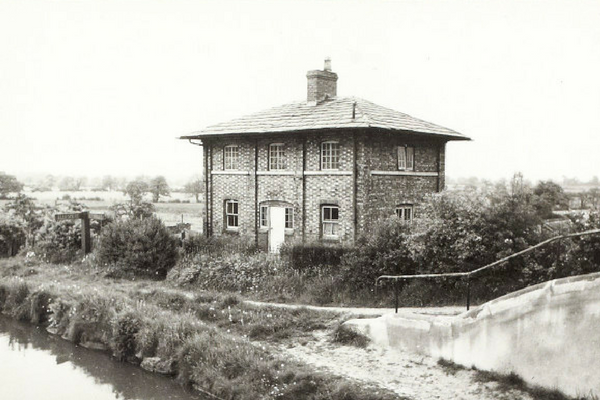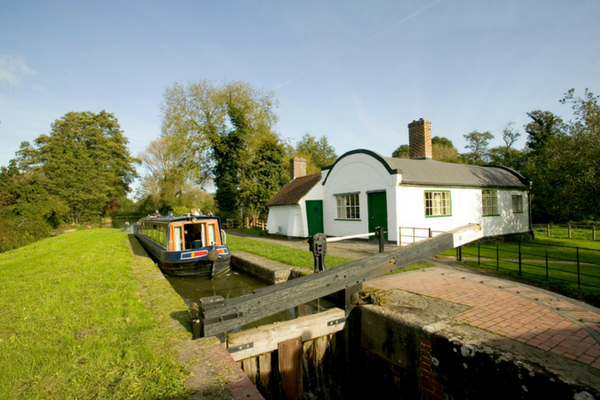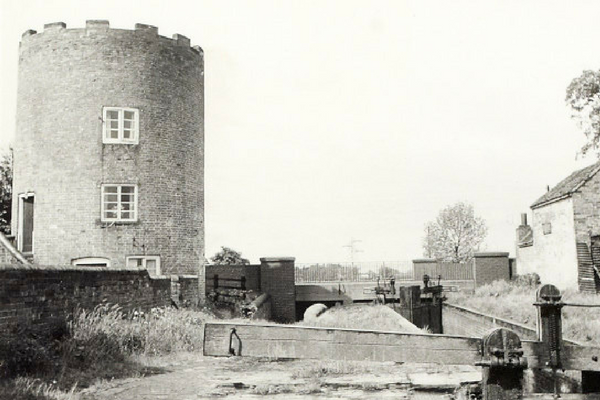Our canals and river navigations represent an internationally important historic environment that largely dates back to the years of Britain’s Industrial Revolution. Yet during the 1960s the founder of the Landmark Trust, Sir John Smith, was so enraged by the demolition of Lock Cottage at Hurleston Junction of the Shropshire Union Canal that the idea of the Landmark Trust was born. At the time the responsibility of the canal network was something of an afterthought, being the responsibility of the British Transport Commission. When it was set up in 1948 one official even remarked: "Oh, do we get the canals too?" The care and conservation of our canal network has come a long way since that time. Today, canals in England and Wales are cared for by the Canal & River Trust.

Former Cottage at Hurleston Junction on the Shropshire Union Canal (Canal & River Trust ref BW200/1/88/1/31)
Our inland waterways have evolved over hundreds of years, forming a diverse network of narrow and broad canals, as well as ‘canalised’ sections of river. Whilst their industrial heyday has long since passed, their original purpose for navigation is alive and well. There are more boats on England’s waterways now than at any time in the past 200 years. The built environment of the waterways represents a unique working heritage of industrial architecture, archaeology and engineering structures and is a valuable part of our national heritage, as well as an integral part of regional cultural heritage and local distinctiveness.
Up and down the country there are significant, and in many cases complete, historic survivals of the Canal Age (c. 1760 – 1840) imbued with a unique character that derives from their original function, as well as the local topography and vernacular architecture often contrasting markedly in scale, form and material. Building types range from massive warehouses to small stables, valve houses and lock lobbies, often with features (like domed roofs) that appear to imitate ‘polite’ styles of architecture.
In the heyday of the canals, when commercial cargo was a common sight up and down the waterway network, a considerable number of workers were required to keep our trunk routes operating efficiently. All of these people needed somewhere to live and consequently, the lock keeper’s cottage evolved. Some of the most popular canals boasted a small army of staff including lengthsmen, responsible for simple maintenance, lock keepers, to ensure the smooth running of locks, and, most importantly, toll collectors.

Lock Cottage at Stoke Pound on the Worcestershire and Birmingham Canal (Paul Miller)
Landmarkers are probably familiar with the two wonderful canal cottages which form part of the unique working heritage and archaeological legacy of the age of industrial canals. The unpretentious Lock Cottage at Stoke Pound on the Worcestershire and Birmingham Canal truly represents the functional tradition of the waterways. It was built to do a basic job of providing accommodation for the lock keeper near the foot of the longest flight of narrow locks in Britain, the Tardebigge Thirty. It bursts with rustic charm perhaps due to its enviable location.
Canal architects would occasionally add stylistic touches to workers’ cottages. Some boasted bay windows which made it easier for the lock keeper to keep an eye on canal traffic – the same logic which prompted the traditional design of the toll house. However, there are doubts as to whether visibility or simple economy led to the interesting circular cottages which dot the Staffordshire & Worcestershire Canal. Likewise, the barrel roofed cottages on the South Stratford canal were more about economy rather than style but either way they are now a visual treat when walking along this canal.
Landmark’s Lengthsman’s Cottage is by far the best example of one of these barrel roofed cottages. The techniques used to build it reflect those of a canal engineer. Brick laying was an integral part of canal construction and the curved brick construction that the builders employed on the roof was the same they employed for tunnels and bridges. Consequently, these cottages looked very much like tunnels above ground, and constitute an original and unique feature of the rural landscape on the South Stratford Canal.

Lengthsman's Cottage on the Stratford-upon-Avon Canal (Landmark Trust)
Much of this precious historic environment is protected by scheduling, listing and conservation area designation. In England and Wales the Canal & River Trust has the responsibility for looking after 2,000 miles of historic waterways, 49 scheduled monuments, 2,701 listed buildings and 317 conservation areas. In addition, thousands of other non-designated buildings, structures and earthworks are almost equally important. Our waterways are also touched by other heritage designations including five World Heritage Sites, 42 historic parks and gardens and nine historic battlefields. The heritage we care for is free to access and use; it provides an everyday, local connection to our past.
We're very privileged to be the custodians of one of the largest collection of industrial heritage. We’re prouder still that these relics of a bygone age are available for anyone to find by our canals and rivers and in our museums and archives; free to touch, discover and absorb.
Understanding and appreciating the waterway heritage is important for everyone employed by the Canal & River Trust and we are constantly working to improve our knowledge and expertise. Heritage advisors work at each of our waterway units, and our contractors and bank staff work to high standards on our historic buildings and structures, often putting into practice skills gained on our own waterway-based heritage training courses.

Views showing Gailey lock no 32 with Gailey Bridge no 79 below and a roundhouse lock cottage (Canal & River Trust ref BW200/1/89/12).
Our heritage advisors are dedicated to caring for the locks, bridges, tunnels, aqueducts, mileposts and all other historic structures along our 2,000 mile network of canals and rivers. Their efforts will ensure that for generations to come, people will always be able to marvel at our soaring aqueducts, steep lock flights and enchanting humpback bridges to the more humble mileposts, centuries-old rope marks in a stone bridge and iconic wooden lock gates.
This piece was written by Elizabeth Thomson, Heritage Adviser for the West Midlands at the Canal & River Trust